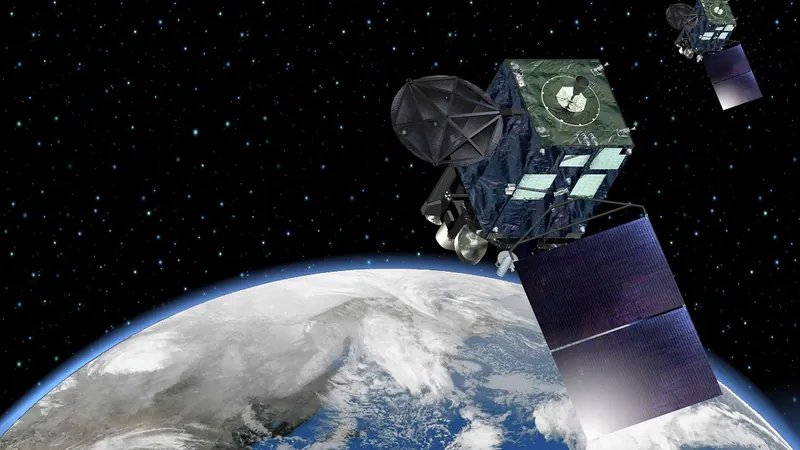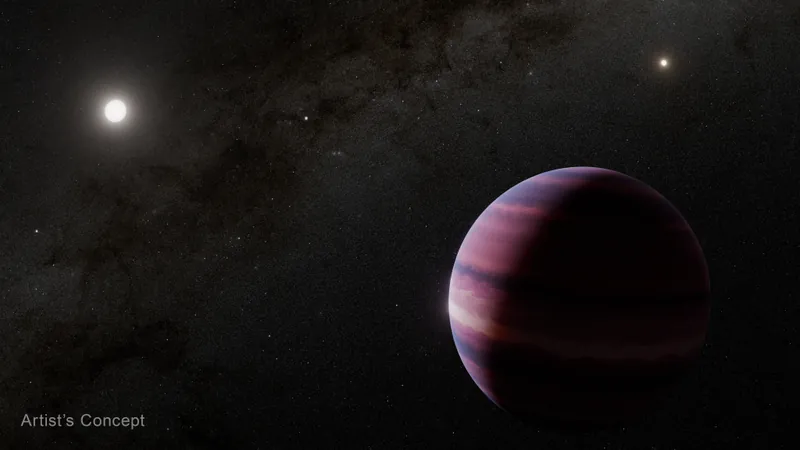
Unlocking Venus: What 10 Years of Data from Earth’s Satellites Reveals!
2025-07-02
Author: Li
For an astounding decade, the Himawari-8 and Himawari-9 satellites have been observing our enigmatic neighbor, Venus. Originally launched in 2014 and 2016 to monitor Earth’s atmospheric phenomena, these advanced satellites have revealed crucial insights into Venus's atmospheric dynamics and mysterious behaviors.
Led by the brilliant Gaku Nishiyama from the University of Tokyo, a team of researchers seized the opportunity to utilize the cutting-edge Advanced Himawari Imagers (AHIs), turning them into unexpected tools for studying Venus. By capturing detailed observations on the planet’s cloud tops, they aimed to unlock the secrets of thermal tides and planetary waves, vital for understanding Venus’s atmospheric intricacies.
Traditionally, studying Venus’s atmosphere has proven challenging: planetary missions rarely exceed ten years, and ground-based observations often fall short due to atmospheric interference. However, the Himawari satellites, set to operate until 2029, are changing the game, allowing for consistent, high-quality data collection.
The researchers meticulously sifted through the AHI datasets to create a comprehensive archive of Venus images, totaling 437 observations. They monitored the variations in cloud-top temperatures during perfect alignments of Venus, Earth, and the satellites, providing a fascinating glimpse into the harsh and ever-changing climatic conditions on Venus.
Their groundbreaking analysis demonstrated notable variations in temperature, revealing changes in thermal tides and planetary-scale waves over time. Interestingly, the amplitude of these planetary waves appeared to diminish with altitude, suggesting a complex atmospheric structure that merits further investigation.
But the team didn’t stop there! They also discovered crucial calibration discrepancies in data from previous Venus missions, highlighting the potential of using Himawari data for improving our understanding of the planet's atmosphere.
Looking beyond Venus, Nishiyama is excited about the implications of this innovative approach. "This method could pave the way for long-term monitoring of other celestial bodies like the Moon and Mercury," he exclaimed, emphasizing the rich information contained in their infrared spectra. These insights could unveil how these rocky bodies have evolved over time, further enhancing our grasp of planetary evolution.
As Nishiyama concludes, the opportunity to gather data unbound by the limitations of traditional ground-based observations is truly exhilarating. This study not only promises to unveil the mysteries of Venus but may also inspire future explorations of our solar system!


 Brasil (PT)
Brasil (PT)
 Canada (EN)
Canada (EN)
 Chile (ES)
Chile (ES)
 Česko (CS)
Česko (CS)
 대한민국 (KO)
대한민국 (KO)
 España (ES)
España (ES)
 France (FR)
France (FR)
 Hong Kong (EN)
Hong Kong (EN)
 Italia (IT)
Italia (IT)
 日本 (JA)
日本 (JA)
 Magyarország (HU)
Magyarország (HU)
 Norge (NO)
Norge (NO)
 Polska (PL)
Polska (PL)
 Schweiz (DE)
Schweiz (DE)
 Singapore (EN)
Singapore (EN)
 Sverige (SV)
Sverige (SV)
 Suomi (FI)
Suomi (FI)
 Türkiye (TR)
Türkiye (TR)
 الإمارات العربية المتحدة (AR)
الإمارات العربية المتحدة (AR)